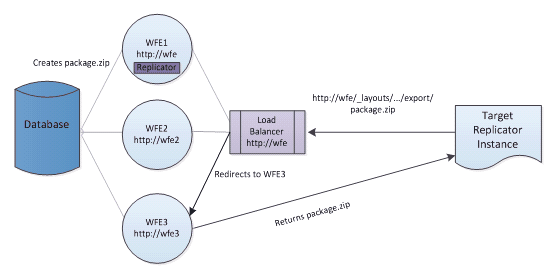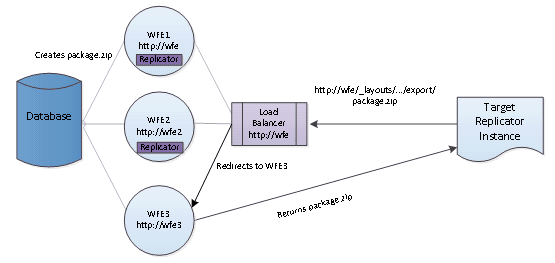Single Web Front-end
If your farm only has one web front-end server, then when the target Replicator instance requests a replication package, it makes the request from that web front-end server. IIS maps the path to the package file, then to the Replicator data folder on the disk, and then returns that file.
Multiple Web Front-ends
When dealing with multiple web front-ends, Replicator only needs to be installed on one web front-end. In this case Replicator captures changes, extracts from the content database, and creates the package zipping it o the Replicator data folder on a shared network drive.
Scenario 1
If your web server has multiple web front-ends, a load balancer is often used in order to redirect traffic to a specific web front-end. Since replicator does not know which web front-end will be sending the package to the target, it is important that all web front-ends have IIS configured to map the Replicator data folder to a shared network folder.
In the picture above, the load balancer is configured to receive incoming requests at http://wfe and forward them to any of the three available web front-ends. In the diagram, the request has been sent to WFE3, at http://wfe3. From this point the process works in the same way as the single web front-end example. IIS on WFE3 is configured to use the Replicator data folder for the export path and the package file is sent to the Target Replicator Instance that requested the package.
Scenario 2
If you wish to install additional Replicator engines to your other WFEs, like WFE2 at http://wfe2, then this can increase your thread count, and the ability of Replicator to manage multiple actions simultaneously. For more information on threads and parallel processing, see the sections below titled Parallel Processing and Threads.



